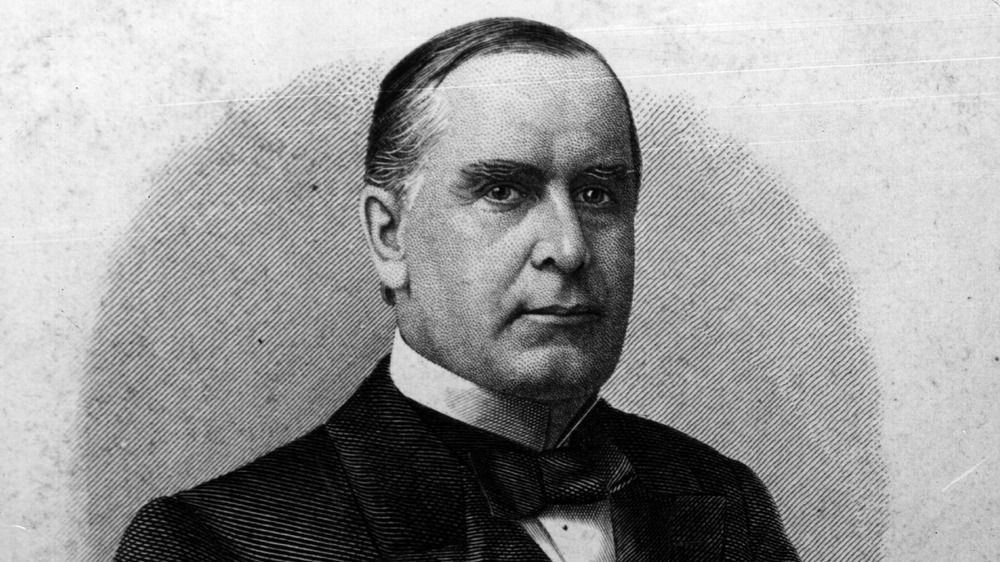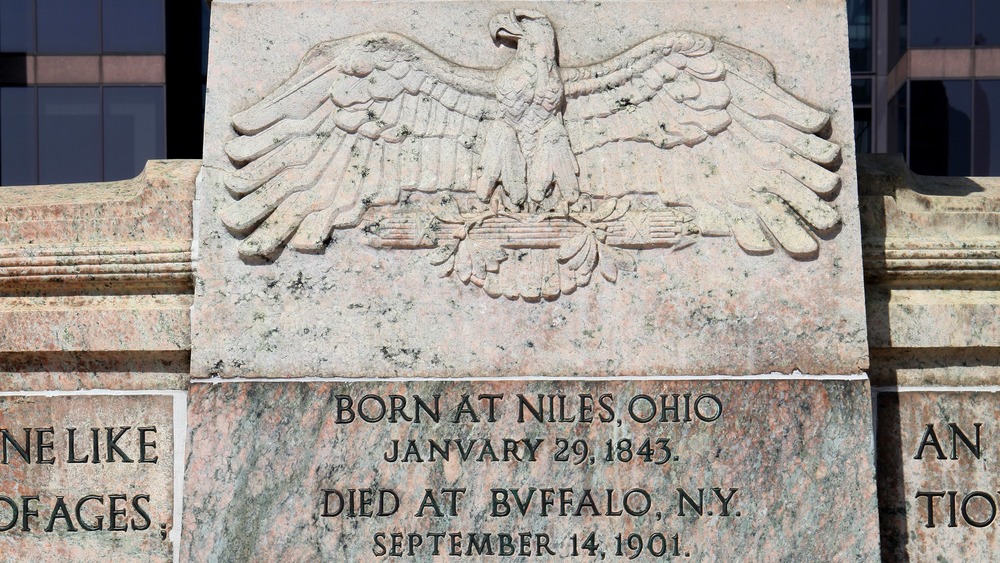Why A Gynecologist Operated On President William McKinley After He Was Shot
On September 6, 1901, President William McKinley, one year into his second term as the 25th president of the United States, attended the Pan-American Exposition in Buffalo, New York. Per PBS News Hour, McKinley was a popular president who had overseen the United States' victory in the Spanish-American War. He gave a speech calling for an end to "isolationism" and shook hands with hundreds of people lined up to greet him at Buffalo's Temple of Music. One of the people, Leon Czolgosz, was an unemployed steel worker from Alpena, Michigan, who'd lost his job in the 1893 Depression, says Biography. Czolgosz became interested in anarchism after hearing a speech by anarchist activist and philosopher Emma Goldman. Unfortunately, he was also inspired by the assassination of King Umberto I of Italy by Italian-American anarchist Gaetano Bresci.
Czolgosz joined the receiving line, concealing a .32 revolver in a handkerchief wrapped around his wrist. When McKinley reached out to shake Czolgosz's hand, the assassin shot the president twice. One bullet bounced off a button on McKinley's coat, but the other entered his stomach. As McKinley fell to the ground, he called out "Go easy on him, boys!"
McKinley was rushed to Pan-American Hospital and operated on by Dr. Matthew Mann. Mann was a gynocological surgeon who happened to be at the exposition and was the first physician to respond. When Mann opened up McKinley's stomach, he couldn't find the bullet within several layers of abdominal fat.
Was McKinley's death preventable?
Mann found and sewed two wounds and decided to close up the president's stomach, not seeing any internal bleeding behind the pancreas. He also didn't insert any drains that might have removed body fluids that can lead to infection. Another local doctor, Roswell Park, was a well-known and accomplished surgeon who might have done a better job on the emergency operation, but he was in Niagara Falls operating on another patient.
After McKinley awakened from the ether anesthetic, he was given morphine as well as "a slurry of strychnine and brandy, then a common means of stimulating the heart." He was transported to the home of a local attorney to recover. At first he seemed to rally, but on September 12, he was diagnosed with heart failure and on September 14, 1901, he died, the third president to die in an assassination.
The bullet couldn't be found during an autopsy. The cause of death was diagnosed as gangrene of the pancreas and stomach. After McKinley's death, the government expanded the Secret Service to include "an elite unit of bodyguards" charged with protecting presidents, vice presidents, their families, major presidential and vice presidential candidates, and foreign heads of state. Vice President Theodore Roosevelt, "a young, vibrant progressive who had a very different view of the role of the federal government" than his predecessor, became the youngest man to assume the presidency at the age of 42. As History reports, Leon Czolgosz was executed for his crime.

